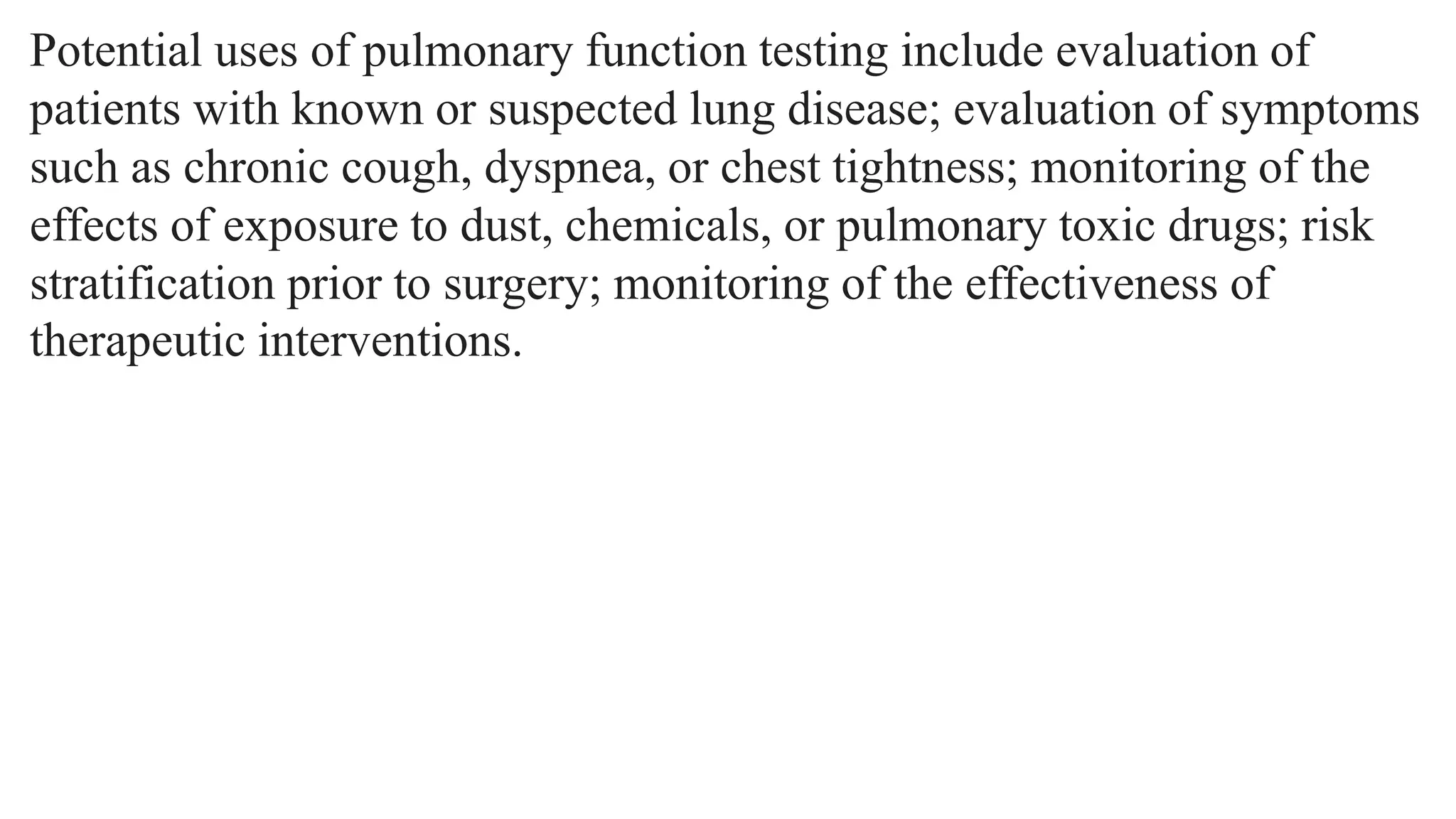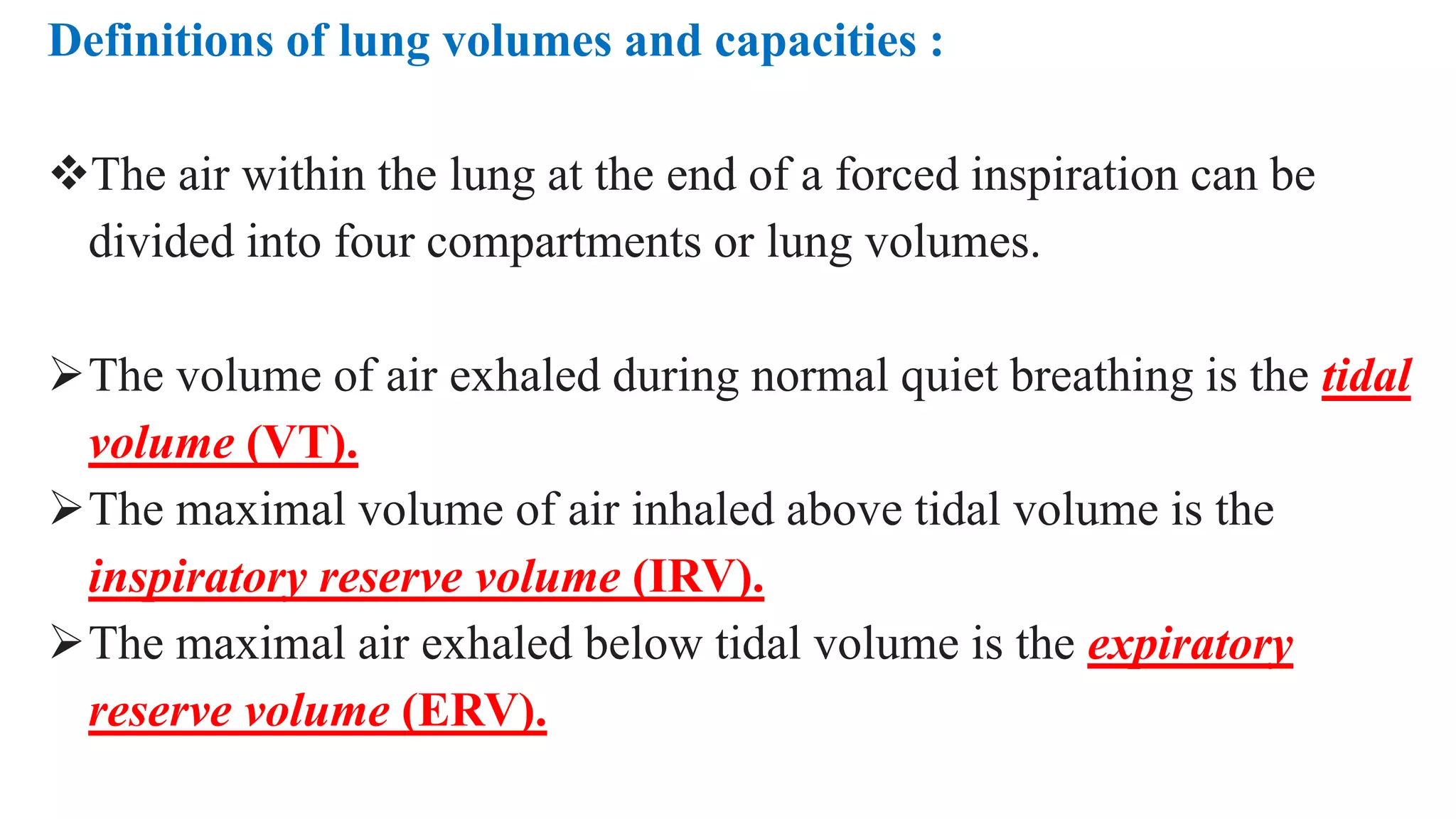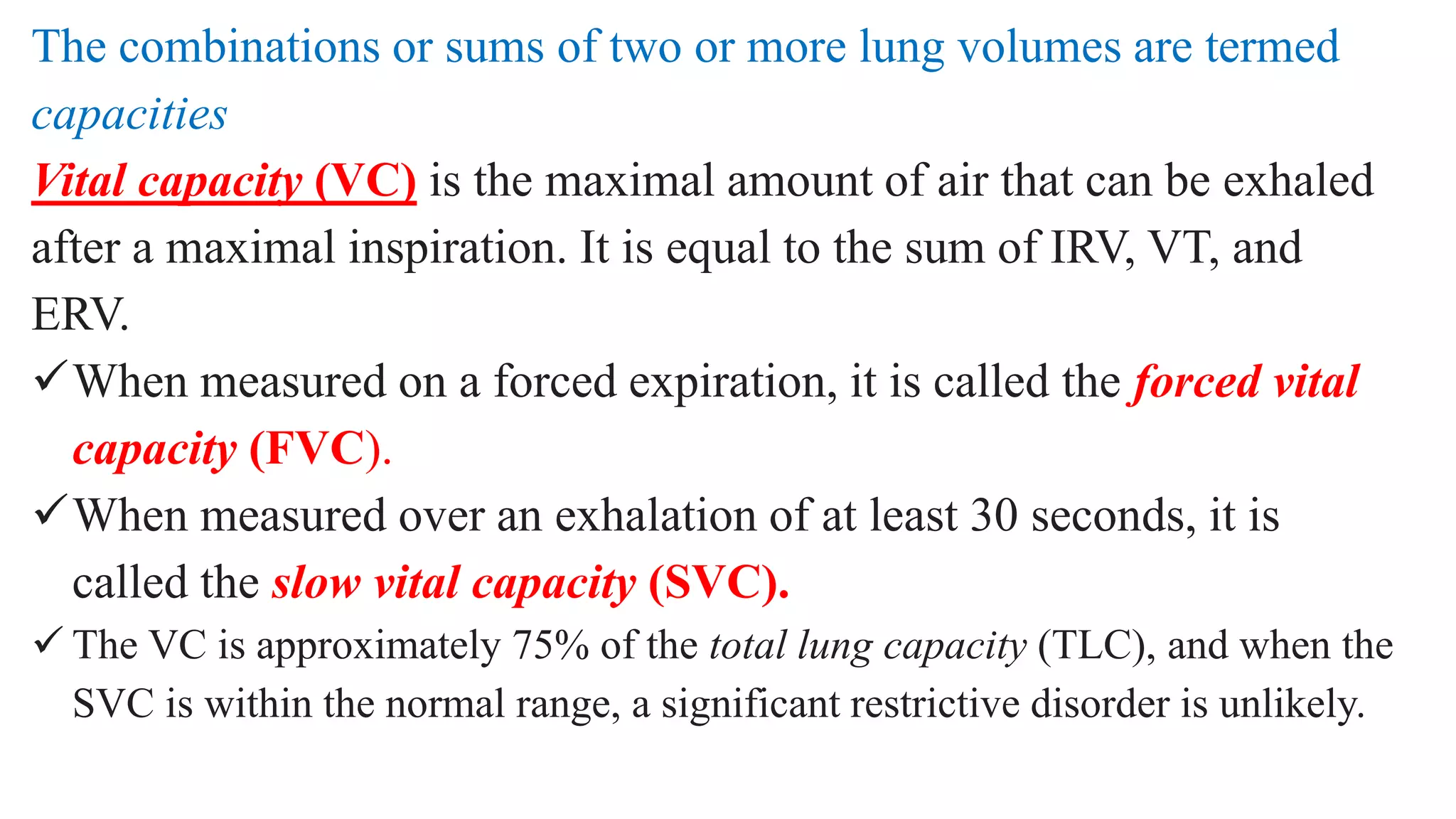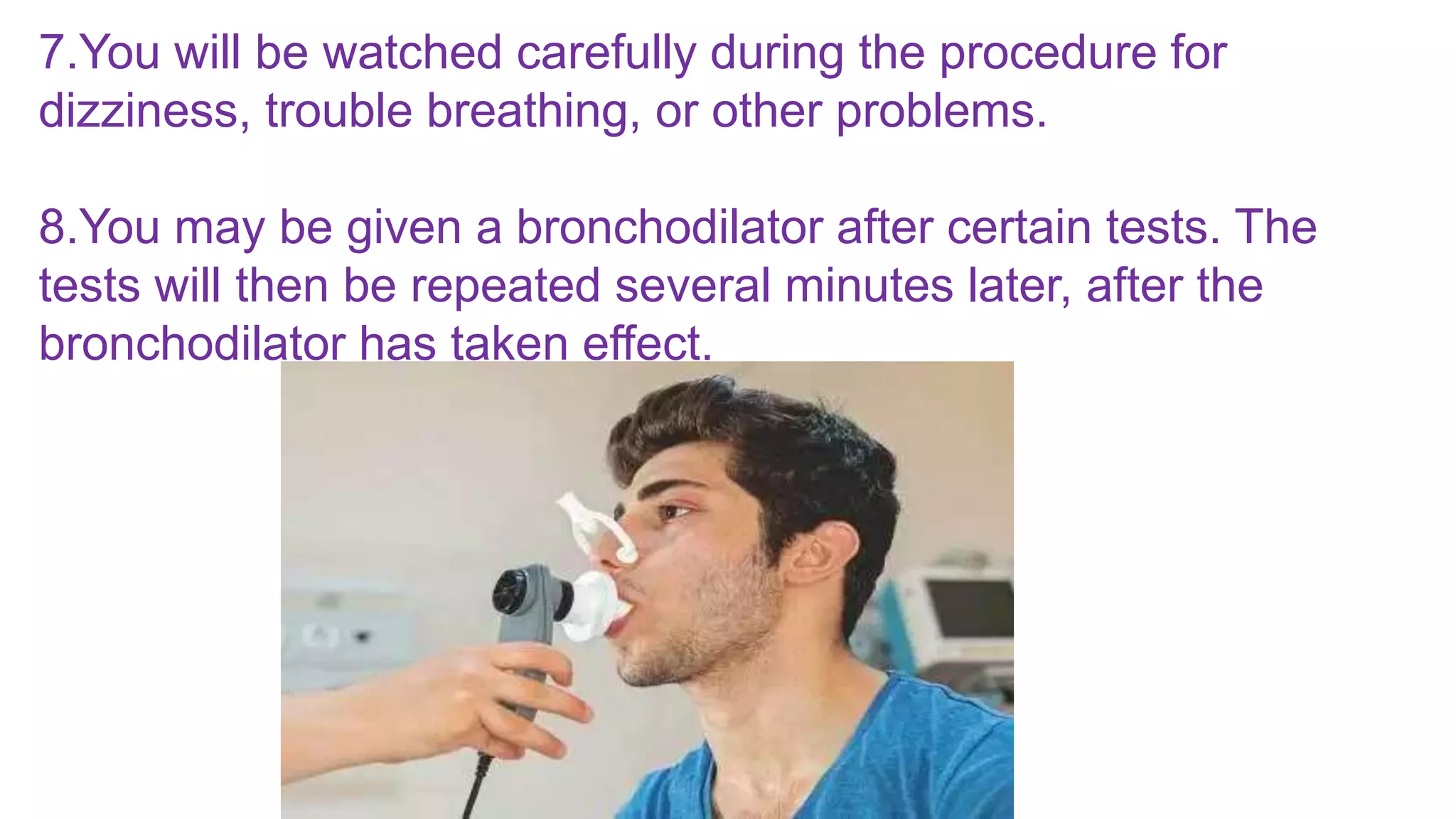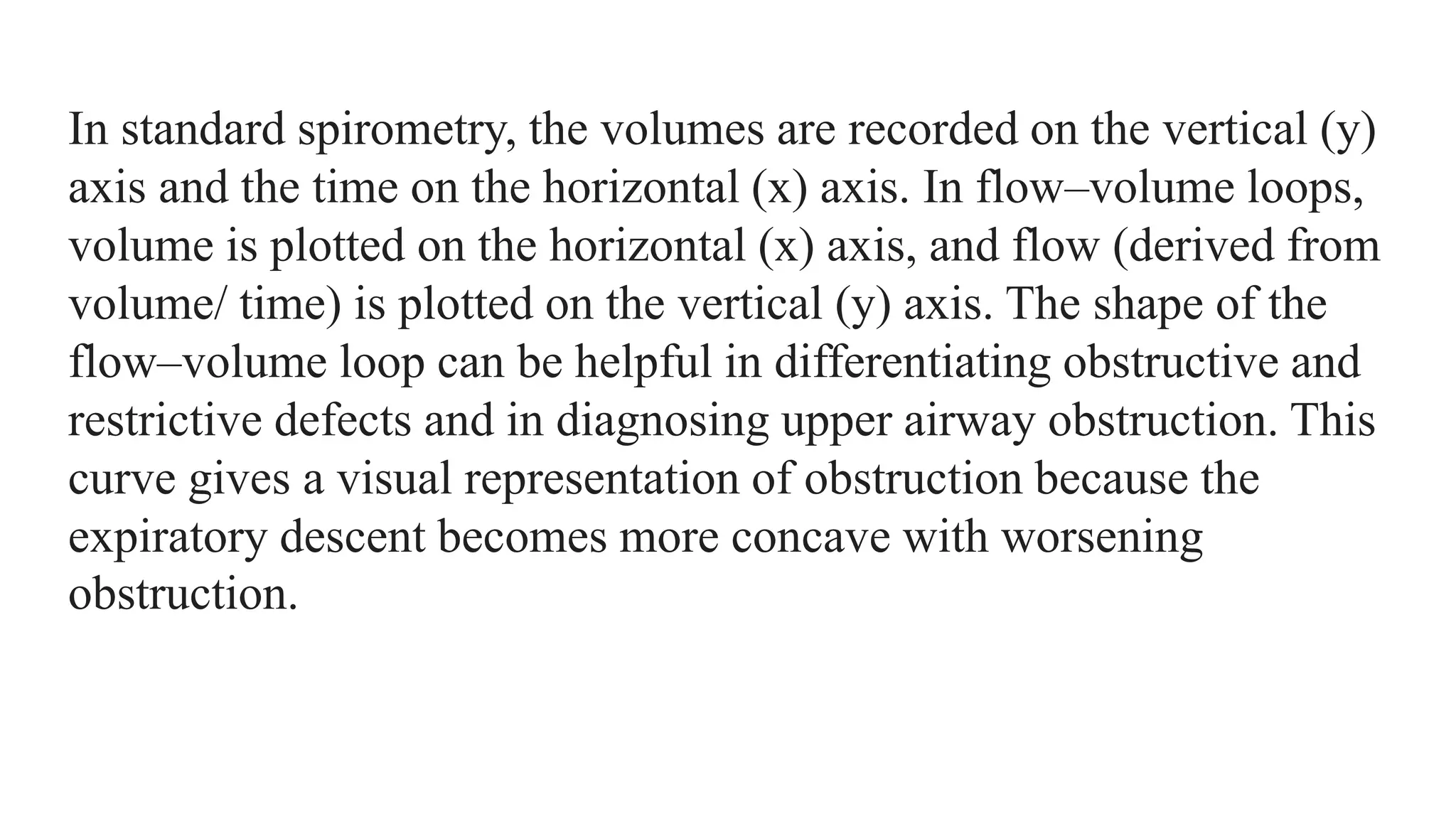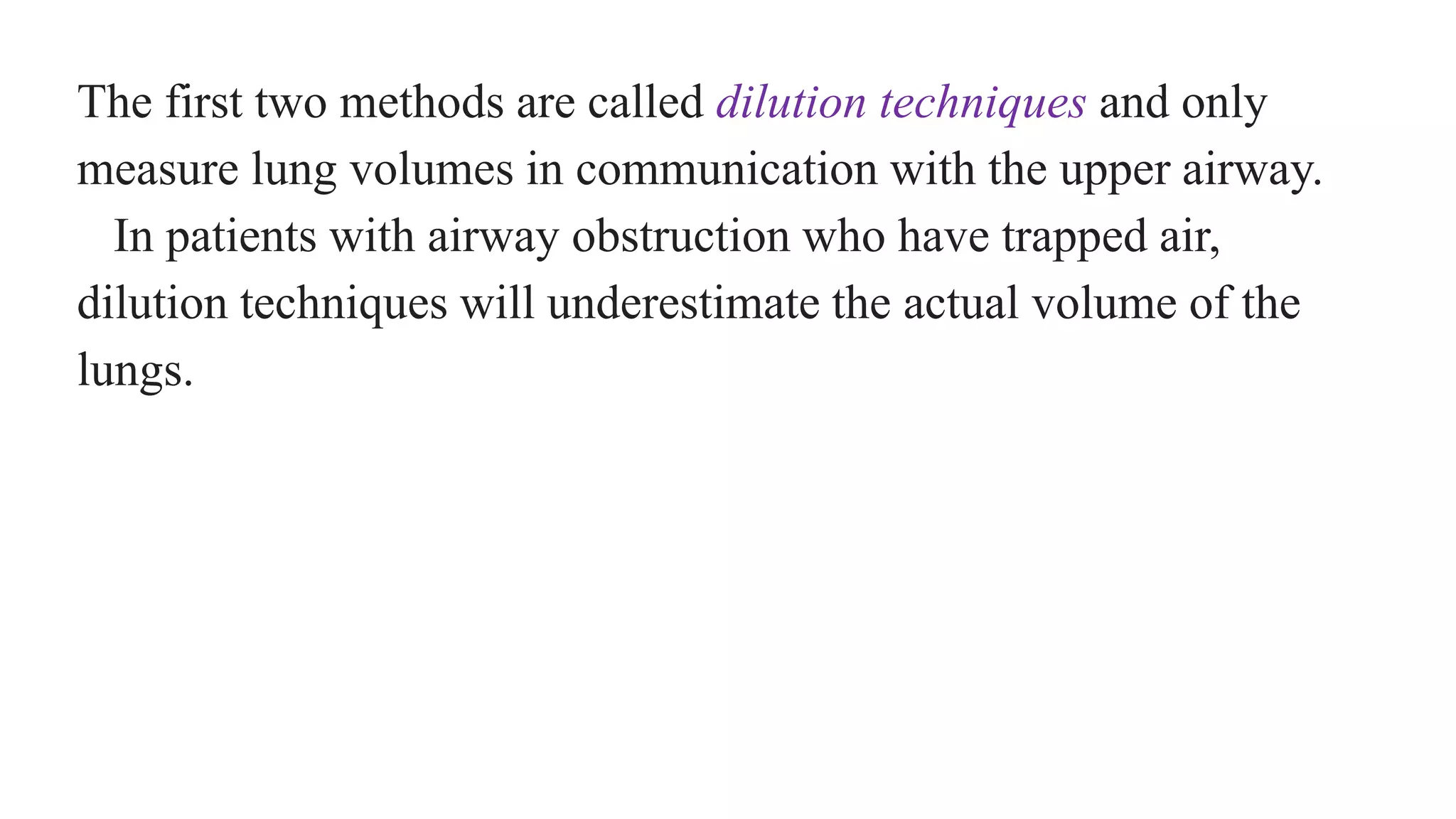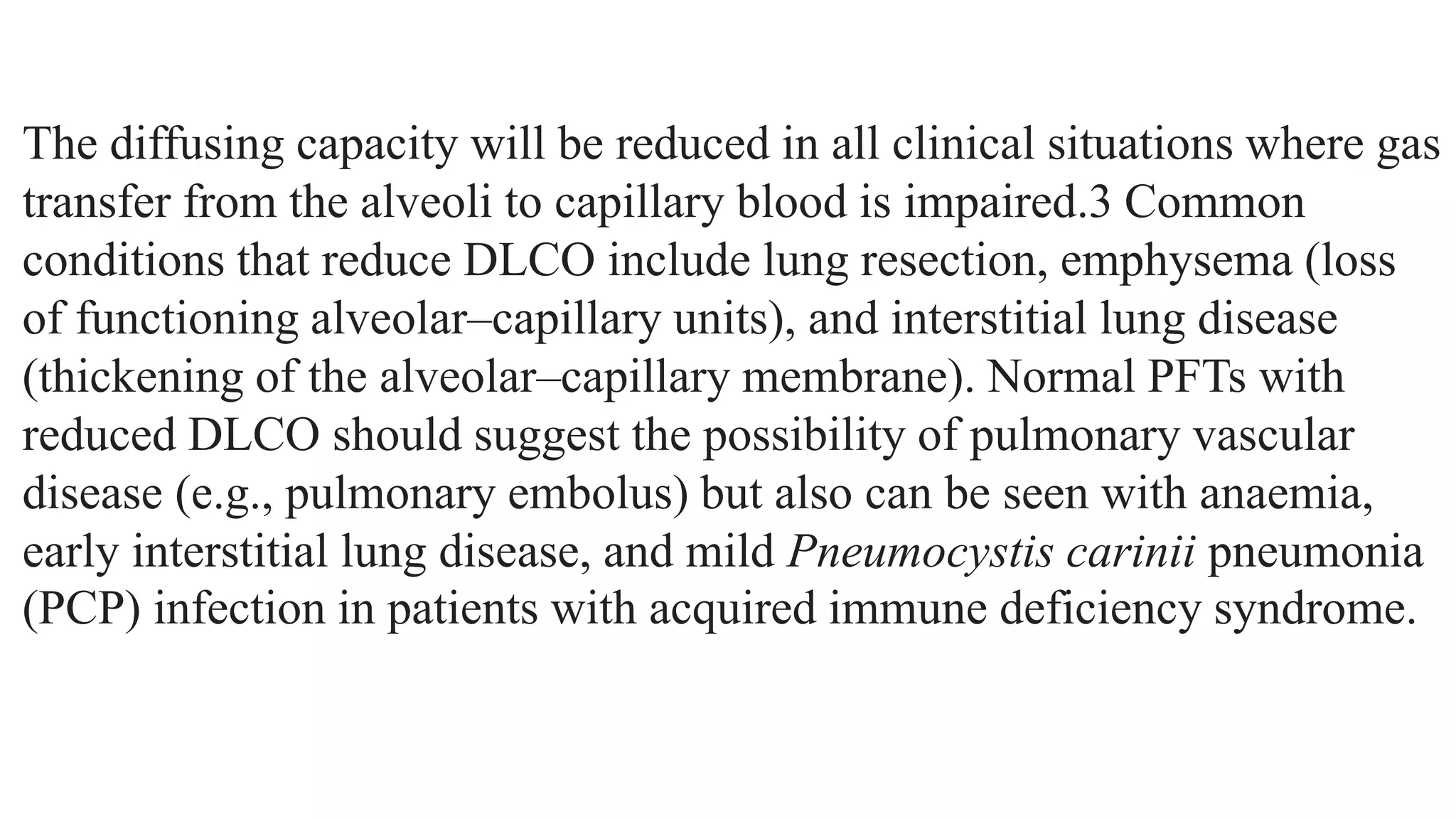The document provides an extensive overview of pulmonary function tests (PFTs), detailing their purpose, methodology, and the physiological functions of the respiratory system. PFTs are utilized to evaluate various lung conditions, assess symptoms, and monitor therapeutic interventions, with specific tests measuring lung volumes, capacities, and gas exchange efficiency. While generally safe, PFTs may pose risks for certain individuals, particularly those with recent surgery or severe respiratory conditions.


